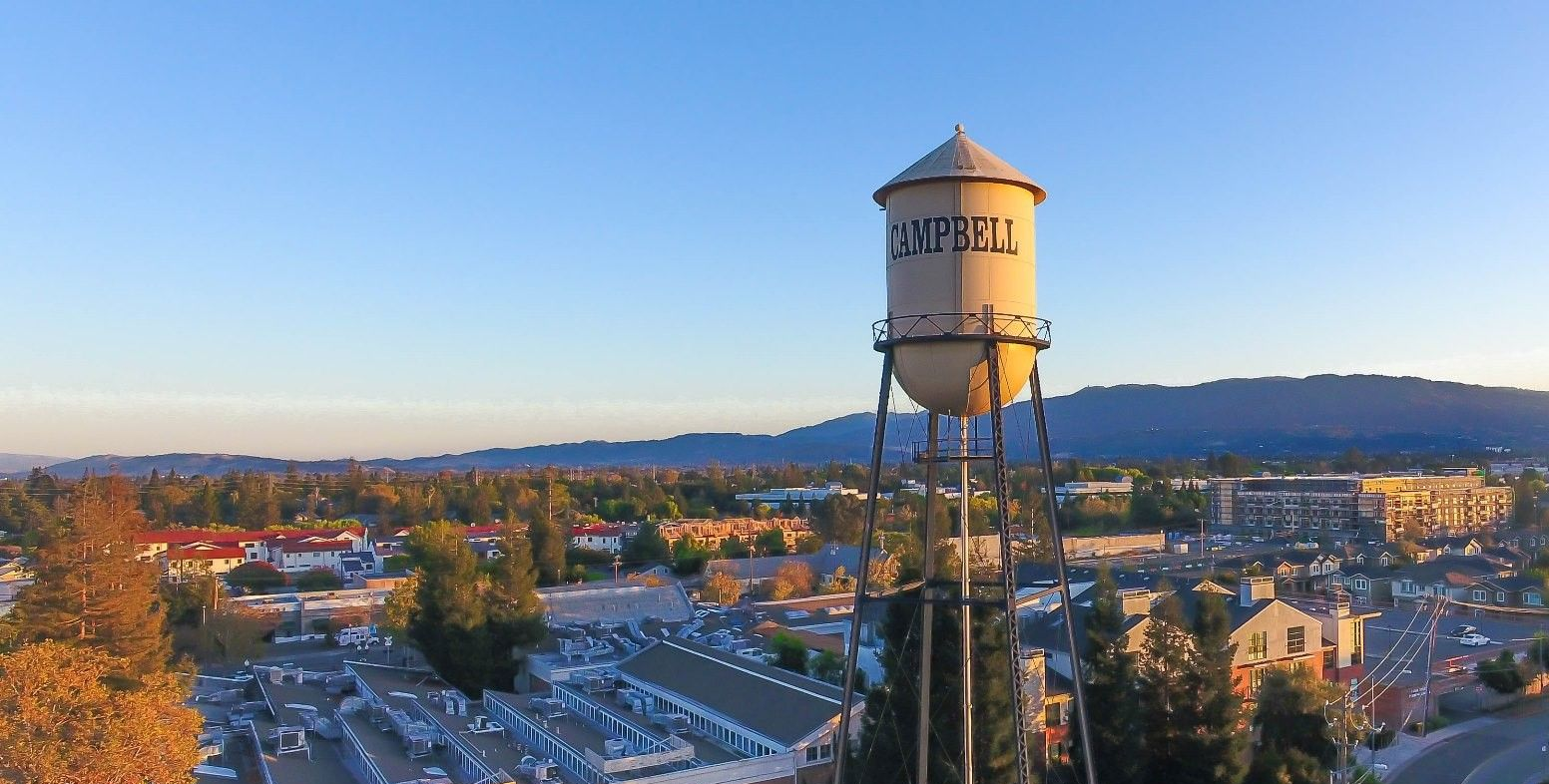Origins & Founding of Campbell:
Campbell, California, is a city whose roots run deep in agriculture and community. Founded by Benjamin Campbell in the 1850s, the city began as farmland where orchards and vineyards flourished. Campbell purchased land for cultivation and slowly established a settlement that would become the heart of the Santa Clara Valley’s agricultural boom.
By the late 19th century, the area had blossomed into a center for canneries and fruit drying—earning the valley its famous nickname, the “Valley of Heart’s Delight.”
Key Historical Milestones:
The arrival of the railroad in 1878 was a turning point for Campbell. It connected the community to broader markets, allowing the export of dried fruit and canned goods across the U.S. and beyond. By the early 20th century, Campbell was home to several canneries, including the J.C. Ainsley Cannery, which employed hundreds and shaped the local economy.
Campbell officially incorporated as a city in 1952, just as the agricultural landscape began transitioning to suburban housing and business development. This shift mirrored what was happening across Santa Clara County, as orchards gave way to homes, schools, and eventually the technology industry that defines Silicon Valley today.
Fun Facts About Campbell:
- Fruit Heritage: Campbell’s early economy was so tied to fruit that it became known worldwide for its dried prunes, apricots, and peaches.
- Railway Roots: The historic Campbell railroad station is still a local landmark, reflecting the town’s growth alongside rail expansion.
- Heritage Theatre: Built in 1938 as part of Campbell High School, the Heritage Theatre remains a cultural hub for concerts and performances.
- Community Parks: Campbell Park and John D. Morgan Park highlight the city’s tradition of valuing open, green spaces amidst suburban growth.
Campbell in the Silicon Valley Era:
Today, Campbell is known for its charming downtown, tree-lined neighborhoods, and vibrant community events like the Campbell Farmers’ Market—one of the most popular in the Bay Area. Its transformation from farmland to a residential hub is a perfect example of how Silicon Valley cities have evolved to balance history with modern innovation.
For real estate, Campbell’s history matters. The very orchards and farmland that once fed the world are now neighborhoods filled with single-family homes, bungalows, and contemporary residences that remain in high demand. Buyers are drawn to Campbell’s strong sense of community, historic character, and its prime location near the heart of Silicon Valley.
Why Campbell History Matters in Real Estate:
Understanding Campbell’s journey helps explain the city’s unique real estate appeal. Its agricultural past means many neighborhoods are established on generous plots of land with mature trees and character homes. Meanwhile, its proximity to major tech employers makes it a highly desirable place for professionals looking to balance work and lifestyle.


